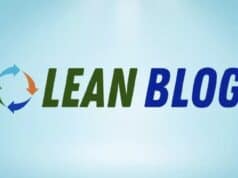The article isn't online, you'll have to join the club lucky enough (ahem) to fly American Airlines to read the gem of an article from American Way magazine titled “Pass the Buck to Make a Buck.”
The main point is a valid one, that refusing to delegate is bad for your employees and bad for business. Agreed. The article references a book Ron blogged about here.
But I take issue with relating delegation to “passing the buck.” If you delegate something (whether it's maintenance of train tracks or toy safety), you are still responsible, as the manager and as the delegating authority. So, I think the headline is in error.
One other thing jumped out at me, a story told that illustrates why you should delegate “outcomes” instead of specific tasks:
“… he advised a retail client to stop telling employees how to stock. The result: Employees filled store shelves about 35 percent faster – precisely because they disregarded some of management's rules. For example, they no longer stocked the soda first, since that required pulling out numerous other crates in order to reach the soda, which is typically stored toward the back.”
Even though it wasn't told in the context of Lean, I thought that was a brilliant story that we could think about in the context of Lean. That's a perfectly good example of why Standardized Work should be defined by those who do the work. It also shows why management must create an environment where “kaizen” (continuous improvement) is something that can be discussed openly, since who knows what improvements might otherwise be left on the table?
Subscribe via RSS | Lean Blog Main Page | Podcast | Twitter @MarkGraban
Please scroll down (or click) to post a comment. Connect with me on LinkedIn.
Let’s work together to build a culture of continuous improvement and psychological safety. If you're a leader looking to create lasting change—not just projects—I help organizations:
- Engage people at all levels in sustainable improvement
- Shift from fear of mistakes to learning from them
- Apply Lean thinking in practical, people-centered ways
Interested in coaching or a keynote talk? Let’s start a conversation.










I agree that outcomes are better than detailing exactly how things are performed. However even in the context of Lean don’t the improvements need to be controlled somehow? It’s great that they allowed the stocker to figure out the best method on his own, but they still tracked his performance and compared it to their previous stats. If the stockers process were less efficient, they would have still had to tell him the current better way.
What I’m getting at is that it is a smart idea to have new employees just do the task (within the context of safety, of course) so that you can see a fresh perspective. You then discuss the results with the other stockers and add the improvements to your workflow.
Kevin — you’re absolutely right. I didn’t finish telling my story there, apparently. I didn’t mean to imply that managers should not care how people do their work.
What I meant to say was that managers should allow employees to define their standard work rather than strictly defining the method for them. Then, managers should hold employees accountable to following it. The managers also need to coach employees through kaizening their process, rather than keeping it carved in stone.
When Truman said “the buck stops here,” it meant he was responsible, not that he did everything himself.